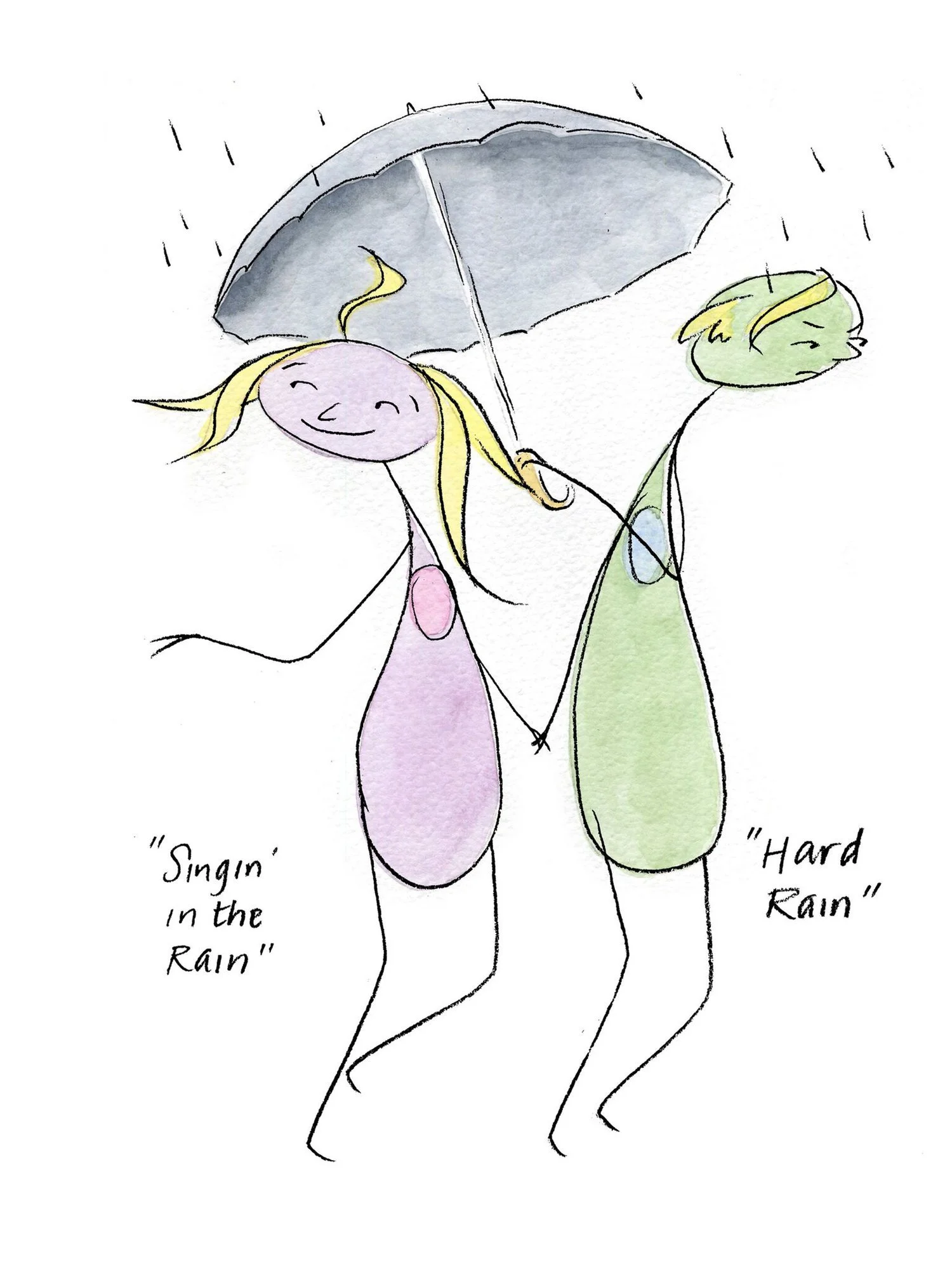by Gretta Keene from her forthcoming book, A Practical Guide to Being Human, with illustrations by Bill Murray
Neuroscientists have discovered that how humans make sense of “what happened” actually alters brain function. The story we believe and tell about an experience has more weight than the actual trauma. That is one reason why similar experiences will affect people differently.
We react and remember according to how we interpret a situation. Our experiences with abandonment and attachment, security and fear, pleasure and trauma, love and anger contribute to how we decide—moment-by-moment—our course of action. Each individual has his or her own unique pre-history. Beliefs and behaviors useful to parents and ancestors in their particular times and circumstances are handed down through the generations. Yet their progeny may find those interpretations and reactions no longer useful.
When we work with couples or individuals, one of the first things we establish is an acknowledgment that we are all, at all times, in different “movies.” Even at moments of extreme closeness – making love, kayaking down a beautiful river, or sharing a spiritual experience – we are each having our own unique set of thoughts, feelings, interpretations of the moment, and we are creating differing memories of “what happened.” The bittersweet truth is that no matter how hard humans try to communicate their inner reality--through words or art or touch or any other means--we can’t “walk a mile in their shoes.” It is hard enough to be aware of what makes us tick, let alone truly know what it is like to be someone else. We will never really know what it is like to be in someone else’s movie.
ILLUSTRATION BY BILL MURRAY, PHD
However, we can learn to understand our own inner movies as well as change the script. Curiosity about the filmmaking going on in our heads is an essential part of mindfulness-based therapy. The movie we replay of “what happened” at our third-grade backyard carnival birthday party is different from the movies made by our mother, father, little sister and each of the guests. But we tend to assume we were all in the same movie.
Meditation is a practice we use to strengthen our muscles of awareness. When we communicate what we know about our movie without demanding that ours is the only possible script, we invite dialogue and connection. We tell clients (and remind ourselves) that it is useful to communicate the details of our current movie way more than we think should be necessary. To ourselves, our movies seem so vivid and real, and we are amazed to find that other people’s movies of the same event can be so confoundedly different!
Bill and I act as detectives or anthropologists — not assuming knowledge, but gathering clues and data. We encourage our clients to do the same. We follow the threads of present beliefs and behaviors back to influential family legends and personalities as well as unprocessed traumas. We look for connections between present difficulties and old, out-of-date, distorted, unhelpful maps and methods for navigating life. In session, we sometimes draw diagrams of family histories to identify internalized patterns of perception. A family that values conflict avoidance would likely create scripts where only the safely mundane is discussed. Uncomfortable feelings and certain events remain secret and unspoken because a new script would be required for any expanded conversations.
Humans evolved not only through mutation and natural selection, but also through mind-to-mind and heart-to-heart connections with other humans. Body language and actions convey much that is vital for human-to-human bonds, but words are our main medium. We have to work hard to communicate, and others have to work hard to understand the communication. When we learn to consider other possible meanings for certain events or patterns in relationships, we are able to change the entrenched beliefs about our life, other people and ourselves. This change impacts how we perceive and react to future events. New insights into the past give us greater insights into the present and offer alternative, more useful responses to common activating situations. When we change the movie of the past, we change the movie of the future.






